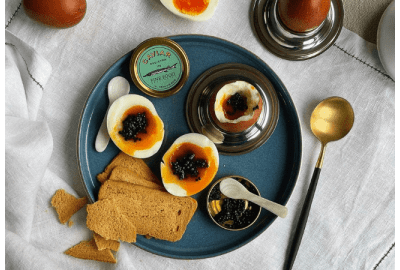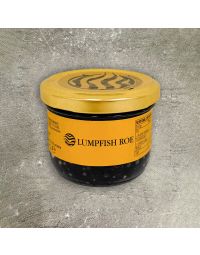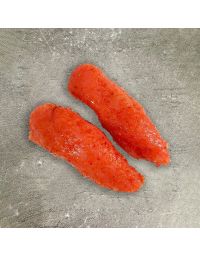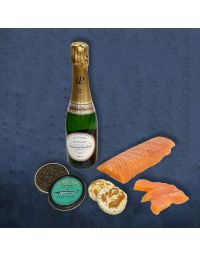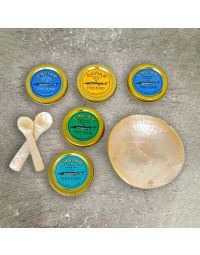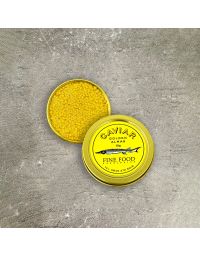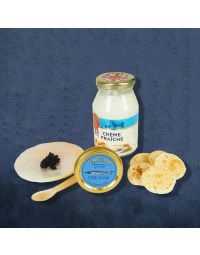Caviar has long been regarded as one of the most unique and versatile ingredients in fine cuisine. For chefs, its flavour and texture offer an unmatched ability to elevate dishes. If you’ve ever wondered about the true taste and character of caviar, understanding its nuances is key to appreciating its place in gastronomy.
This guide explores the taste, texture, and applications of caviar. It also provides practical advice for serving and using this ingredient effectively, with recipe ideas to inspire your culinary experiments.
Key Takeaways:
- Caviar Taste: A combination of saltiness, briny depth, and subtle nutty notes.
- Black Caviar Taste: Refers to sturgeon caviar varieties like Beluga and Oscietra, known for their delicate, creamy flavours.
- Caviar Texture: Smooth and silky, with the distinct pop of the eggs.
- Caviar Accompaniments: Blinis, crème fraîche, and Champagne are popular pairings.
- Caviar Cost: Prices vary widely, influenced by the species, size, and quality of the roe.
What Does Caviar Taste Like?

Caviar delivers a flavour that is both subtle and complex. At its core, it is a balance of saltiness, umami, and brininess, often compared to the clean taste of the sea but with greater depth.
Sturgeon Caviar Flavour Profiles
Sturgeon caviar (sometimes referred to as "black caviar") is considered the gold standard, with variations between species:
- Beluga Caviar: Creamy and buttery, with large, soft eggs that dissolve smoothly on the palate.
- Oscietra Caviar: Nutty and slightly fruity, with a firmer texture and smaller pearls.
- Sevruga Caviar: Boldly briny with an intense flavour and fine, delicate eggs.
Salmon Roe
Technically not caviar but a widely appreciated alternative, salmon roe is bright, briny, and fish-forward, making it ideal for pairing with lighter dishes or as a garnish. In recipes like Salmon Caviar with Cream Cheese and Blinis, the roe’s bold taste balances the richness of cream cheese and the slight tang of the blinis.
Texture: The Defining Characteristic of Caviar

Texture is as crucial as flavour when it comes to caviar. High-quality sturgeon caviar is defined by smooth, firm pearls that gently burst against the palate, releasing their briny essence. The sensation is creamy yet crisp, with no graininess—a hallmark of inferior products.
For dishes, texture adds a new dimension. In Scallops with Oscietra Caviar and Potato Rosti, for example, the luxurious texture of the scallops is complemented by the crispness of the rosti and the delicate pop of Oscietra caviar.
How to Serve Caviar

Serving caviar is an art, and attention to detail can transform the tasting experience.
Classic Accompaniments
- Blinis: Light and slightly sweet, they provide a neutral base for the caviar.
- Crème Fraîche: Creamy with a slight tang, it balances the caviar’s brininess.
- Egg and Onion Garnish: Adds subtle texture and enhances the caviar’s natural flavours.
For a refined twist, consider Soft Scrambled Eggs & Beluga Caviar Vol Au Vents. The creamy scrambled eggs amplify the texture of the caviar, while the pastry provides structure and crunch.
Best Practices for Serving
- Keep caviar chilled, served directly from the tin on a bed of crushed ice.
- Use non-metallic utensils like mother-of-pearl, bone, or wood to preserve the delicate flavours.
- Serve small portions—caviar is meant to be savoured in moderation.
Pairing with Drinks
Caviar pairs well with drinks that cleanse the palate, such as dry Champagne or vodka. The effervescence of Champagne balances the saltiness, while vodka provides a clean, crisp contrast.
Original & Surprising Ways to Serve Caviar

Elevating caviar beyond traditional pairings requires a touch of culinary ingenuity. Here are three surprising ways to showcase caviar that are perfect for out-of-the-ordinary dining occasions:
1. Caviar-Topped Oysters
Enhance freshly shucked oysters by garnishing them with a teaspoon of caviar. The combination of the oyster’s natural brininess and the silky pop of caviar creates an harmony of oceanic flavours. Serve with a chilled mignonette or a delicate cucumber granita for added refinement.
2. Caviar with Sushi or Sashimi
Incorporate caviar into Japanese-inspired dishes for a luxurious twist. For instance, Hiramasa Sashimi with Shiso and Salmon Caviar uses the roe to highlight the buttery texture of sashimi-grade fish. Caviar can also crown a perfectly crafted nigiri or accompany hand-rolled sushi, offering a subtle burst of saltiness that complements the clean flavours of raw seafood.
3. Caviar on Lobster Bisque
Take a rich lobster bisque to the next level by finishing it with a generous spoonful of caviar. The velvety soup contrasts beautifully with the texture of the pearls, while the caviar’s briny notes enhance the sweetness of the lobster. Serve in a small cup or bowl as an appetiser for a truly indulgent start to the meal.
Recipes Featuring Caviar

Caviar can be showcased in various ways. Get inspired with our recipes from Drogo's Kitchen:
1. Soft Boiled Eggs with Oscietra Caviar
Eggs and caviar are a match made in heaven! Try serving one of our Oscietra caviar taster pots on top of soft-boiled eggs for a truly decadent breakfast or snack.
2. Soft Scrambled Eggs & Beluga Caviar Vol Au Vents
A favourite for brunch or as an appetizer, this recipe layers soft, creamy eggs with the buttery flavour of Beluga caviar. The vol-au-vent pastry adds a satisfying crispness.
3. Salmon Caviar with Cream Cheese and Blinis
A classic combination, this canapé pairs the bold pop of salmon caviar with the creamy richness of cream cheese, all atop light and fluffy blinis.
4. Scallops with Oscietra Caviar and Potato Rosti
Seared scallops, nutty Oscietra caviar, and crispy potato rosti come together in this elegant dish. The contrasting textures make each bite memorable.
Understanding Caviar Cost
Caviar’s price is influenced by its rarity, species, and production method. For example:
- Premium Varieties: 000 Huso Huso Beluga caviar is among the most expensive due to its long production cycle and large, delicate eggs.
- Oscietra and Sevruga Caviar: Slightly more accessible, these options still deliver refined flavour and texture.
- Salmon and Lumpfish Roe: More budget-friendly alternatives that offer excellent flavour, though distinct from sturgeon caviar.
The cost is a reflection of the care and time invested in harvesting and processing. Opting for high-quality caviar ensures both flavour and freshness.
FAQs About Caviar
1. What is caviar?
Caviar is the salted roe of sturgeon fish, traditionally sourced from species like Beluga, Oscietra, and Sevruga. Salmon and trout roe, while often referred to as caviar, are technically not classified as such.
2. Does caviar really taste good?
Caviar’s subtle flavours and distinct texture make it a sought-after ingredient for many chefs and food enthusiasts. Its appeal often grows with exposure, as its nuanced profile may take time to fully appreciate.
3. Do you chew caviar?
It’s best to let caviar pearls burst naturally in your mouth. While you can chew lightly to release more flavour, over-chewing may diminish the overall experience.
4. Is caviar healthy?
Yes, caviar is rich in omega-3 fatty acids, vitamins, and minerals. It supports heart health and brain function, though its high sodium content means it should be enjoyed in moderation.
Sturgeon caviar remains a staple in professional kitchens for its ability to enhance dishes with its refined taste and texture. Whether served simply with blinis or featured in recipes like Scallops with Oscietra Caviar, it brings depth and sophistication to the plate.
Discover a curated selection of premium caviar at Fine Food Specialist and elevate your culinary creations.

